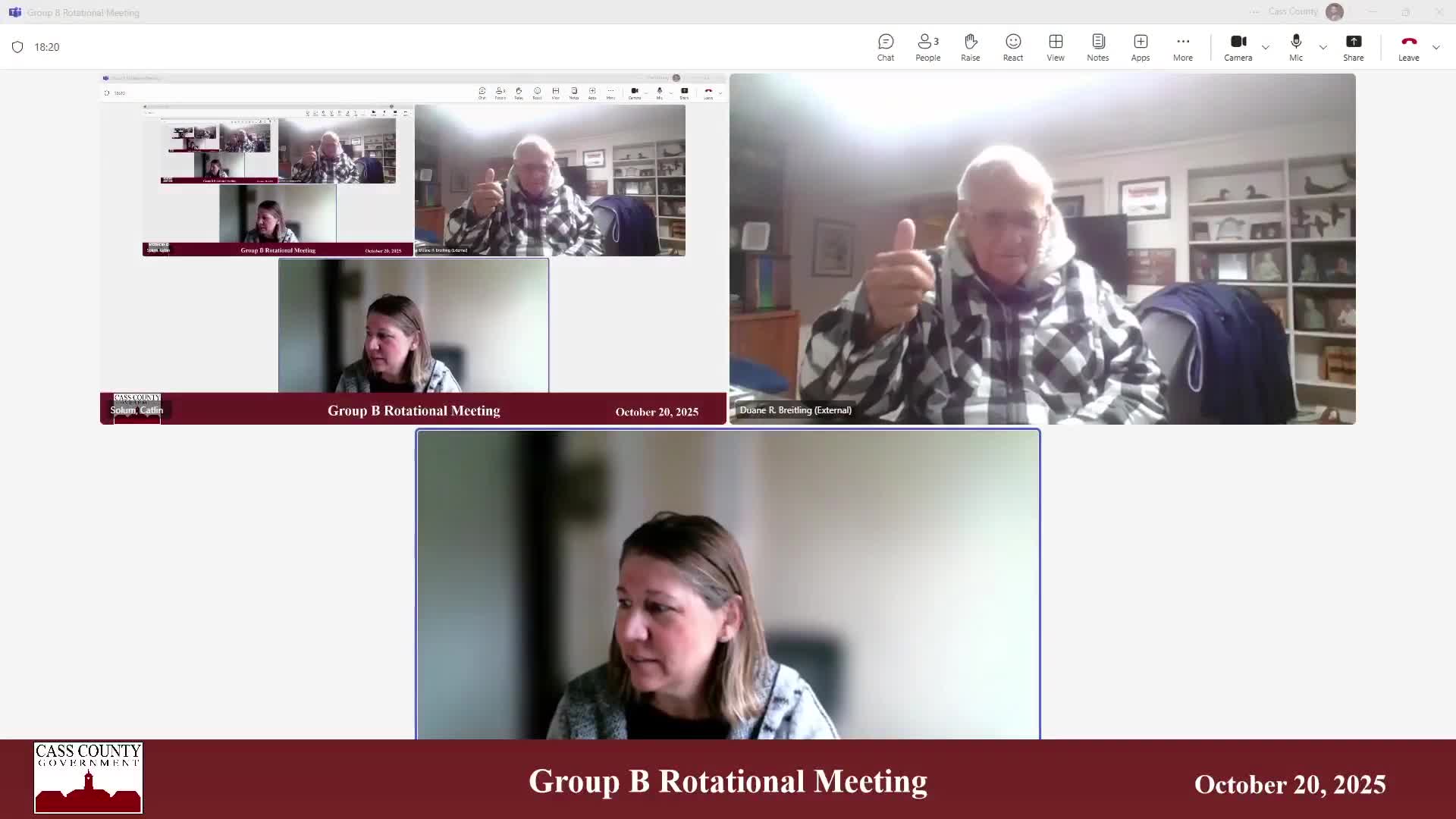Cass County coroner reports rising deaths in 2025, describes new fingerprint system and staffing adjustments
October 21, 2025 | Cass County, North Dakota
This article was created by AI summarizing key points discussed. AI makes mistakes, so for full details and context, please refer to the video of the full meeting. Please report any errors so we can fix them. Report an error »

Christy, the Cass County coroner, told the county commission that deaths in 2025 have exceeded last year’s totals and that the office is likely to hit an all-time high by year-end.
The coroner said the office has four full-time staff who rotate death investigations and weekend calls for a 24/7 operation. She reported relatively few homicides so far in 2025, but said suicides are trending upward and could exceed 2024 totals by year-end. Drug-related deaths remain steady, with fentanyl and methamphetamine the most common substances; the office has recorded about five deaths involving xylazine this year.
The coroner described steps the office has taken to improve identification and operations. A fingerprinting device purchased this year produced 57 decedent fingerprint scans; of those, one required submission to the FBI for a positive identification, which produced a match within four hours. The coroner said the device uploads fingerprints electronically to the FBI when needed, and that having digital fingerprints on file is useful for families and investigations.
Autopsy work is done by UND Forensics and Pathology Services in Grand Forks, the coroner said. Because of guidance from the National Association of Medical Examiners, the office has ordered more autopsies for certain motor-vehicle deaths and other cases where injuries or circumstances are unclear. Grand Forks currently assigns three medical examiners to handle autopsies for the region; they no longer do weekend autopsies, which the coroner said reduces the need for weekend transport.
The coroner described internal space changes to provide private interview space and a family room, and said the office’s transport vans are often all in use during busy periods (she noted the county’s response during a tornado in June). She said the office may eventually need a second Ford Transit, but will wait for workload data before requesting a new vehicle.
Questions from the commission included where toxicology and drug testing are processed. The coroner said autopsy labs are drawn by the medical examiner and paid for by the state; for non-autopsy cases the office draws samples and currently sends them to the state crime lab, which she said has a typical turnaround time of about three months. In the past the office used a private lab (NMS in Lehi), but it was expensive.
The coroner closed by thanking staff and noting the strain that higher caseloads place on a small team.
The coroner said the office has four full-time staff who rotate death investigations and weekend calls for a 24/7 operation. She reported relatively few homicides so far in 2025, but said suicides are trending upward and could exceed 2024 totals by year-end. Drug-related deaths remain steady, with fentanyl and methamphetamine the most common substances; the office has recorded about five deaths involving xylazine this year.
The coroner described steps the office has taken to improve identification and operations. A fingerprinting device purchased this year produced 57 decedent fingerprint scans; of those, one required submission to the FBI for a positive identification, which produced a match within four hours. The coroner said the device uploads fingerprints electronically to the FBI when needed, and that having digital fingerprints on file is useful for families and investigations.
Autopsy work is done by UND Forensics and Pathology Services in Grand Forks, the coroner said. Because of guidance from the National Association of Medical Examiners, the office has ordered more autopsies for certain motor-vehicle deaths and other cases where injuries or circumstances are unclear. Grand Forks currently assigns three medical examiners to handle autopsies for the region; they no longer do weekend autopsies, which the coroner said reduces the need for weekend transport.
The coroner described internal space changes to provide private interview space and a family room, and said the office’s transport vans are often all in use during busy periods (she noted the county’s response during a tornado in June). She said the office may eventually need a second Ford Transit, but will wait for workload data before requesting a new vehicle.
Questions from the commission included where toxicology and drug testing are processed. The coroner said autopsy labs are drawn by the medical examiner and paid for by the state; for non-autopsy cases the office draws samples and currently sends them to the state crime lab, which she said has a typical turnaround time of about three months. In the past the office used a private lab (NMS in Lehi), but it was expensive.
The coroner closed by thanking staff and noting the strain that higher caseloads place on a small team.
View full meeting
This article is based on a recent meeting—watch the full video and explore the complete transcript for deeper insights into the discussion.
View full meeting
